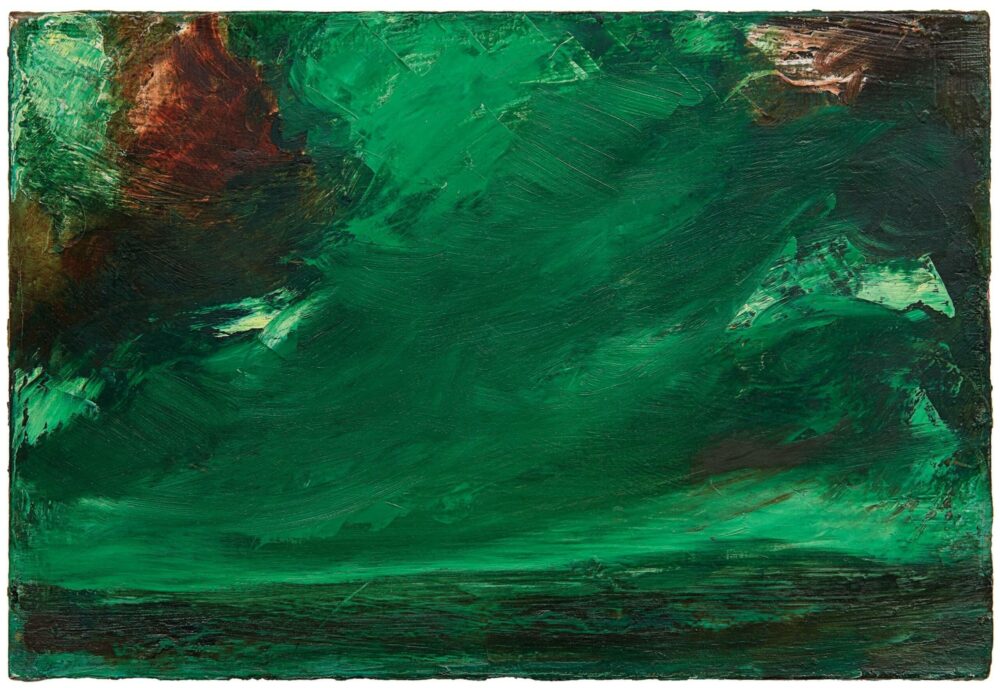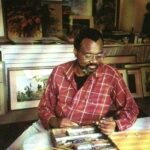Past Event
More Life: Jesse Murry: Rising

Jesse Murry, “Untitled (Green and Brown)”, courtesy Tibor de Nagy Gallery, New York
David Zwirner is pleased to present Jesse Murry: Rising, curated by Lisa Yuskavage and Jarrett Earnest, opening September 14, 2021 at the gallery’s 533 West 19th Street location in New York.
Painter and poet Jesse Murry (1948–1993) identified three significant approaches to landscape —“poetic,” “dramatic,” and “visionary,” which he aimed to synthesize into abstract paintings. Built of subtly shifting color dynamics, his canvases became “places summoned by the memory through the imagination; where the elements of WEATHER are protagonists that act out moods open to many readings; where the light & space have a spiritual import.” To this end, the horizon was both his central image and guiding ideal, as the moment where near and far, inside and outside, self and other could be negotiated and reconciled. Fusing the Romantic painting tradition of John Constable and J.M.W. Turner with the quality of mind and imagination of Wallace Stevens’s poetry, Murry uniquely sought to create a “landscape” within the fiction of painting that could be “more than a place to dwell but a suitable space for dreams.”
Jesse Murry: Rising brings together paintings from the last five years of the artist’s life. This work—made while confronting his impending mortality from AIDS-related illness—testifies to Murry’s lifelong belief in the capacity of painting to hold the complexity of human meaning, at the meeting of a material fact and a location within the mind.
In June 1981, the US Centers for Disease Control first reported what would eventually be known as AIDS. Marking the fortieth anniversary of this report, this series of curated solo exhibitions highlights a selection of artists—Ching Ho Cheng, Derek Jarman, Frank Moore, Mark Morrisroe, Jesse Murry, Marlon Riggs, Silence=Death collective, and Hugh Steers—whose lives were cut short by HIV/AIDS-related complications during approximately the first twenty years of the epidemic.
This series explores the affective, aesthetic, personal, and political responses to the crisis. As new HIV infections continue to impact nearly 1.7 million individuals annually around the world, we present a focused look—through exhibitions, roundtable discussions, and a selective timeline—at some of the artists who were affected at the beginning of the ongoing crisis, and who are often neglected in broader art-historical and cultural narratives.
